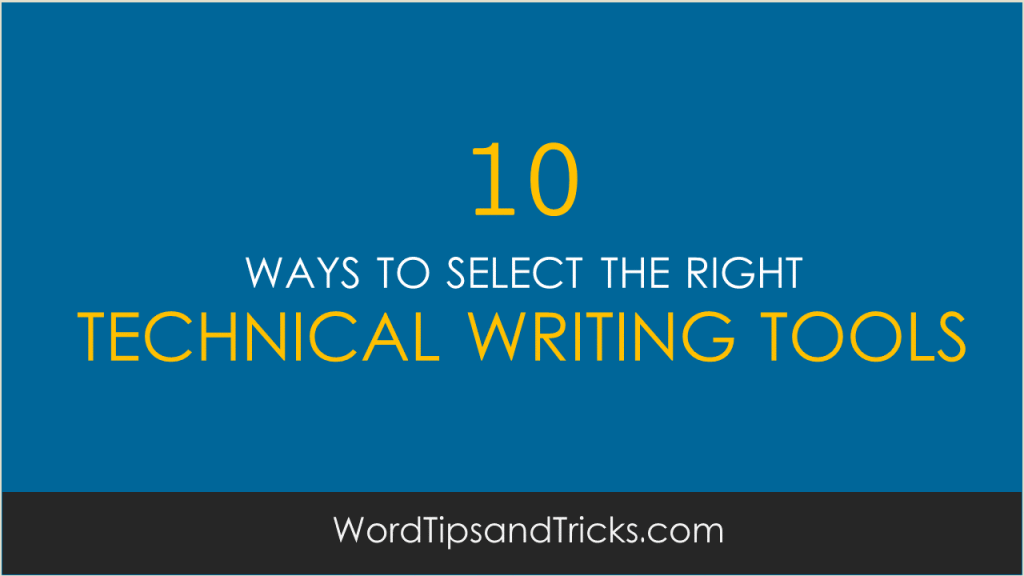Technical writing is simple but the tools can be difficult. If you’re new to technical writing, it can be difficult to know which software to buy for your Tech Docs dept. In this checklist, we look at some of the criteria you need to consider.
10 Points When Selecting Technical Writing Tools
Some points to consider when choosing software for writing user guides and technical documentation:
- Requirements – make a list of what you want the software to do. You won’t need all the features that come with FrameMaker, Interleaf or other specialist writing packages. So, instead of investing in these products upfront, define your publication requirements and then start looking at the products – not the other way around! For example, if you don’t know much about FrameMaker, try to determine if its features are relevant to your project – maybe they’re overkill for what you’re trying to achieve – and then make your decision. Create a Product Features spreadsheet and use this to evaluate the products before you buy anything.
- Single Sourcing – this is the holy grail of many Publications Departments. Single sourcing means that you create one ‘master’ version of the content, which you can then export to other file formats. Instead of reformatting text, layout and images, you can click a button and it’s available in whatever format you want. Do you really need single sourcing? Most companies don’t and can get by with MS Word documents, which can be converted into PDF or HTML. Two features that MS Word can easily handle. Granted, the HTML won’t be perfect, but you can refine it in a HTML editor if you need to.
- Qualified Trainers – before you select a new product, or a product that your company has no used before, check with the local training companies and see if they product such training. Otherwise, you may not be able to train your team with this product and will have to invest considerable energy in learning how it works. Not very practical if you’re running a busy Publications Dept.
- Qualified Writers – as in the previous point, check with the local recruitment agencies to see if they have writers with these skillsets on their books. We recently wanted to hire a RobeHelp / RoboHTML content developer. These folks were very hard to get, so we outsourced the work to a specialist company. Lots of time, effort, money…
- Support – this sounds boring, but if you can’t get support when the wheels start falling off, you’re in real trouble. Many times I’ve had to trawl web forums and BBSs for an answer because the Tech Support couldn’t answer my question or the answer they provided was inadequate. MS Word gets a lot of criticism but, in its defence, it goes to great length to provide workarounds to the many issues you’ll find in any piece of software.
- Testimonials – speak to other people who work in technical publications and other areas related to professional writing. Go to the most popular writing forums and ask for their opinion.
Tip: try to be specific. If you ask a general question, you’ll get a general answer. - Templates – if you’re choosing a new product, see if templates are included on the CD. You can use these to get up and running fast. Starting from scratch can be very expensive.
- Trial Versions – download the 30-day trial versions and start testing. Before you download anything, define the areas your want to test. List them in order of priority. Have sample documents ready for the testing. Make sure you have enough time to do the testing before the trial period expires!
- Price – what is the licensing costs associated with the product, especially if you need to get multi-licences copies. For example, Adobe FrameMaker costs close to 700 USD, so five copies will cost 3500 USD. Wonderful though the product may be, this may be outside your department’s budget.
- Making the Final Decision – after testing all applications, sit down and compare the products using a spreadsheet to calculate the results. Try to be as objective as possible and avoid being influenced by glossy brochures, free tools, and other extras that you probably will never use.
If you are buying on behalf of your company, ask yourself: if this was my own money, would I buy this product?
